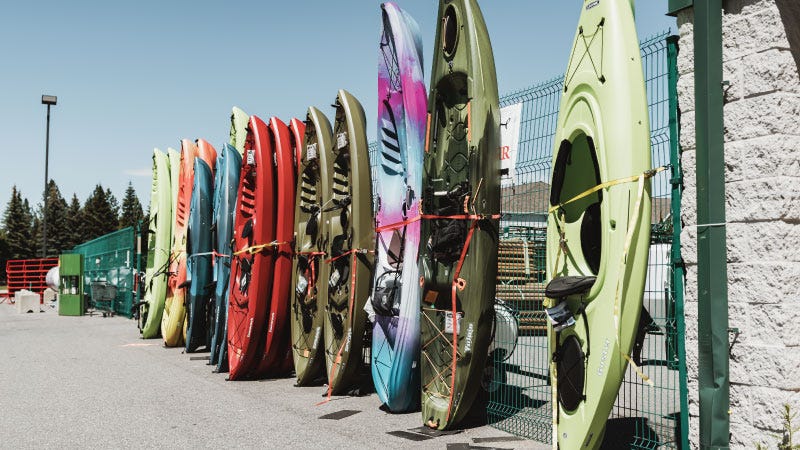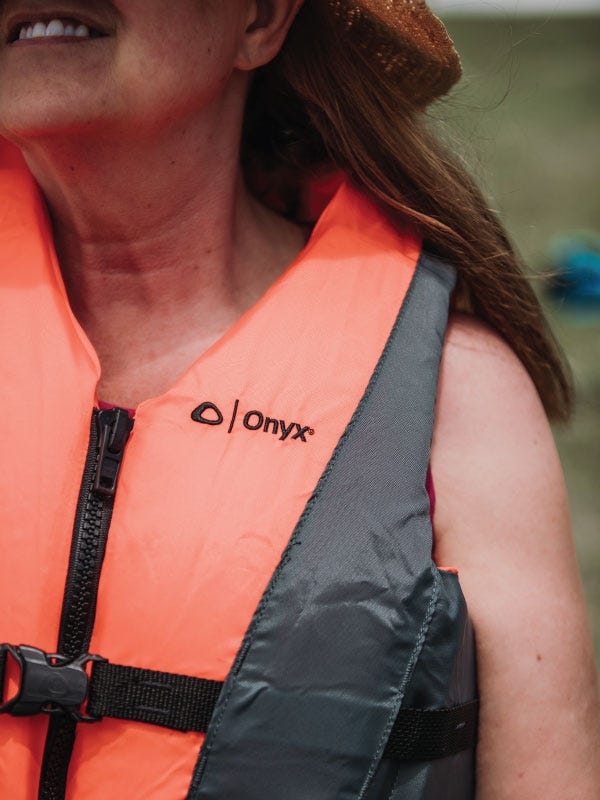The Key to Kayaking Adventure: Safety

Picture yourself gliding across calm waters, the Gates of the Mountains (or your own local majestic waterscape) careening on each side of a narrow Montana lake as you embark on your kayaking adventure. While kayaking offers endless thrills and opportunities for relaxation, it's crucial to prioritize safety to ensure a memorable and enjoyable experience. In this brief guide, we will explore the essentials of recreational kayak safety, equipping you with the knowledge and skills to paddle with confidence.
What is Recreational Kayaking?
A popular outdoor activity, kayaking offers an immersive way to explore waterways, lakes, and coastal areas. It provides an excellent opportunity to connect with nature, improve fitness, and enjoy quality time with friends and family. It is important to note, however, that recreational kayaking is very different than whitewater or ocean surf kayaking. The later categories are fun, but much more extreme versions of the sport. We won’t be talking about that here. Instead, we will focus on the more basic activity of exploring safe and relatively calm waterways in a small paddle craft. With its increasing popularity, understanding the foundations of recreational kayaking is essential for a safe and enjoyable experience.


Different Kayak Types
Recreational kayaking has three basic types of kayaks common to the sport. The most common is the sit-in kayak. These tend to be a popular choice for inland waterways and lakes since they keep you out of the water and dryer (therefore warmer) than the alternatives. They are stable and hard to flip, but if you do then you risk filling up the boat with water. Sit-on kayaks are more common in warm waters and surf conditions. They have scuppers (little drains for water) built into them so even if water comes over the boat or it flips, the boat will remain safe. Be warned though… you’re gonna get wet! Those scuppers let water out, but also in meaning that you’re all but guaranteed to have some come through from time to time. Not an issue when it’s warm enough though. Finally, there are inflatable kayaks. These are great if you have limited travel space (like a small car or if you fly with your kayak on vacation) since they fold down to a fraction of their inflated size. They tend to be a bit of a hybrid of sit-in/on kayaks so you’ll get more wet than a sit-in, but have more insulation than a sit-on. Be careful not to get a puncture or you’ll be swimming back to shore! Inflatable kayaks also tend to be harder to paddle since they flex in the water making them less efficient. You can find all of these kayaks at just about any price point as well, allowing most anyone to easily start kayaking.
Understanding the Risks
While recreational kayaking is relatively safe, it's crucial to acknowledge the potential risks involved. Understanding these risks will allow you to prepare effectively and mitigate potential hazards. The most obvious is sinking or drowning. Be sure to always wear a quality USCG approved Personal Flotation Device (PFD). Knowing how to swim is always a good idea as well. If you really want to up your game then having a CPR certified person with you could just save your life if things go really bad!
Changing weather conditions are a constant threat as well. Be sure to check the weather for the day that you are going to be out on the water. Bring lots of water, some nutritious food, and put on sunscreen too. Make sure to be on the lookout for quickly changing dangerous weather such as storms. If you see lighting get out of the water immediately and seek shelter. Similarly, knowing the situation of currents in the area that you’ll be in is vital. Many people have been worn out or even died by fighting a current. Remember: Mother Nature Always Wins.
Water is wet. Duh, right!? Well your electronics will thank you if you keep them dry and your body just might as well! Dry bags or Pelican cases can protect your valuble electronics from water damage or loss. Make sure to bring a jacket and change of clothes (synthetic or wool is better for cold environments. Remember, "cotton kills") in your dry bag for after your adventure too. On the note of unwanted splashes, be sure to watch for motor boats. Not only are they often times much faster than a kayak and may not see you, but some are intended to create surfable wake which could lead to an easy capsize if you aren't careful. Head bow first into the waves and keep you head on a swivel for an speeding boats.
Finally, have an emergency plan on how to contact 911 or other emergency responders. Your cell phone may not work in the wilderness. Have a map of where you’re going and be sure to tell someone where you will be and when you should get back. If kids are involved then be even more careful. From changing weather conditions and strong currents to capsizing and unexpected emergencies, being aware of the risks is the first step towards a safer kayaking journey.




Essential Safety Tips for Recreational Kayakers
As a summary, let’s review the basics of kayaking safety for a fun time on the water and add in some advanced things to consider as well:
A. Choosing the Right Kayak and Equipment:
Selecting a suitable kayak, ensuring proper fitting life jackets (Personal Flotation Device), and equipping yourself with essential gear are vital aspects of kayaking safety.
B. Preparing for Your Kayaking Trip:
Checking weather forecasts, planning your route, informing others of your plans, and carrying appropriate safety essentials are key steps to ensure preparedness.
C. Basic Paddling Techniques:
Learning proper paddling techniques, including posture, grip, and efficient strokes, will enhance your control and maneuverability on the water. Have properly fitted paddles to make it easier.
D. Safety Practices on the Water:
Understanding right-of-way rules, maintaining a safe distance from other watercraft and obstacles, and being mindful of water conditions will contribute to a safer experience.
E. Dealing with Common Situations and Emergencies:
Learning how to handle capsizing, reentering the kayak, assisting others in need, and knowing when to seek help are essential skills every recreational kayaker should possess.
Environmental Considerations
Safety isn’t just about you! There are others (both now and in the future) that want to use these amazing natural resources that we have. Respect them!
Recreational kayakers have a responsibility to protect the natural environment they explore. Respect wildlife, practice Leave No Trace principles, and support conservation initiatives to ensure the preservation of natural habitats for future generations.
As you prepare for your next recreational kayaking adventure, remember that safety should always be your top priority. By understanding the fundamentals of recreational kayak safety, equipping yourself with the necessary skills and gear, and being mindful of the environment, you can paddle with confidence, fully immersing yourself in the wonders of the water. Embrace the beauty.
Looking to get started in kayaking? Check out these related products from North 40 Outfitters...








